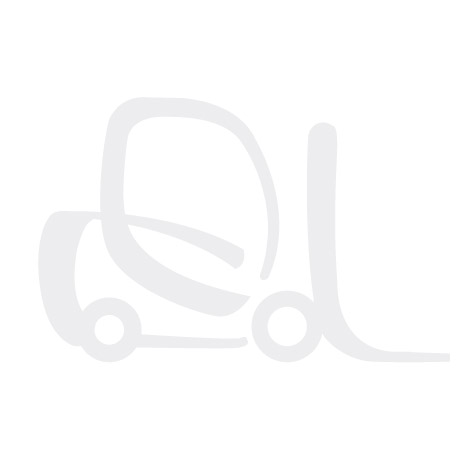Forklift Accessories – It’s a Matter of Balance
In a previous post, we discussed the importance of forklift safety accessories. The person involved in the forklift accident outlined in that post was a pedestrian. While pedestrian accidents do happen, they are only one reason why forklift accidents occur. The major cause of of accidents is operator error and more often than not, it is because the operator fails to know or adhere to safe load limits.
All forklifts should have clearly visible tags attached to them that state their load capacity and lift limits. However, even these are not enough to ensure safe operation of the vehicle if the driver is not properly trained. A forklift may have the capacity to lift 4,000 lbs, but if the load is not handled correctly, it’s carrying capacity can be reduced significantly.

Forklift fork extensions are safe in trained hands
In a way, a forklift is like a see-saw. If 2 children of equal weight sit on each end of the seesaw, it will become balanced parallel to level ground. If one of the children moves forward, that changes the fulcrum point and the child sitting furthest from the center of the seesaw becomes “heavier” and causes their end of the seesaw to drop.
Children intuitively understand the physics of seesaws, but forklift operators seem to forget this lesson in balance and do not place their loads against the mast. This will work if the load is a light one, but as it approaches the lift truck’s carrying capacity, the situation becomes dangerous. It becomes even more dangerous when forklift accessories such as fork extensions are used.
While children playing on a seesaw can safely experiment with load limits, it takes only one mistake for a forklift operator to cause a serious or fatal accident. That’s why OSHA requires that forklift attachments that may affect their safe operation be approved by the manufacturer and tags or stickers that state their load and operating capacity limits fixed to the vehicle.
Two lift trucks with identical load capacities may not be suitable for the same forklift attachment, either. The center of gravity or fulcrum point of one forklift may be different than that of another and while one may be able to safely lift a load at the end of a fully extended telescoping boom, the other may not.
Balance is equally important in preventing forklifts from falling sideways. For this reason, most forklifts are designed to be driven on level surfaces only and with loads that are centered on the forks. According to informed sources, 42% of industrial truck fatalities occur when a vehicle tips over and crushes the operator or someone standing nearby. Moreover, more forklift fatalities occur in manufacturing plants than in seemingly more dangerous work areas such as mining operations or construction sites.
Forklift attachments and accessories are invaluable aids to workplace productivity, but they must be treated with the respect they deserve. OSHA and other authorities repeatedly stress that the 3 best ways to prevent forklift accidents due to poorly balanced loads are to:
- Stay within safe operating limits.
- Train operators in the safe handling of forklifts and forklift attachments.
- Always wear seat belts.
 Forkliftaccessories.com has over 40 years of history in the materials handling business. We’re here to help if you have any questions about the products we sell, so don’t hesitate to contact us if you need help finding or choosing your forklift accessories. Also have a look at our catalog of forklift training materials. Our Counterbalance Forklift Video Training Kit, for example, is designed to comply with OSHA standards and provides detailed information about forklift stability issues.
Forkliftaccessories.com has over 40 years of history in the materials handling business. We’re here to help if you have any questions about the products we sell, so don’t hesitate to contact us if you need help finding or choosing your forklift accessories. Also have a look at our catalog of forklift training materials. Our Counterbalance Forklift Video Training Kit, for example, is designed to comply with OSHA standards and provides detailed information about forklift stability issues.
